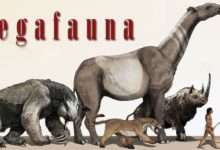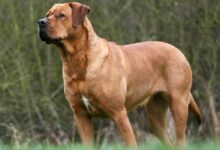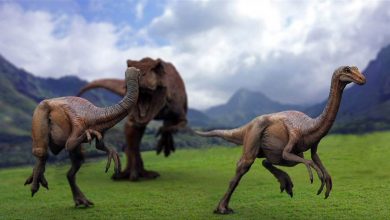Fossa (Cryptoprocta ferox)
Madagascar’s largest predatory mammal
The fossa is one of the oldest species of animals found in Madagascar, and it is also the largest predatory mammal inhabiting the island. The Madagascar fossa is the only living representative of the genus Cryptoprocta, resembling a cat. Due to the loss of habitat, the number of representatives of this species continues to decline, making the fossa an endangered species. Our regular readers will surely notice the similarity to the jaguarundi.
Classification
- Kingdom: Animalia
- Phylum: Chordata
- Class: Mammalia
- Order: Carnivora
- Suborder: Feliformia
- Family: Eupleridae
- Genus: Cryptoprocta
- Species: Cryptoprocta ferox

Habitats
Fossa lives only in Madagascar, we will not find it anywhere else in the natural environment. It prefers densely forested areas where it feels extremely safe and where it finds many sources of food.
Initially, fossils were found all over the island, mainly in forests and wooded areas, but due to extensive deforestation and constant human interference with nature, today they can be found in only a few places in Madagascar.

Characteristic
Appearance
The Madagascar fossa is the largest predator inhabiting the island – its length is sometimes even two meters, from the mouth to the tip of a long and slender tail, males are not much larger than females.
The tail of the Fossa is the same length as the torso and helps to keep it balanced as it moves and jumps through the trees. This species is characterized by short but dense red to dark brown coat. Fossas have a small head resembling a cat’s head, their muzzle is quite wide, they have small dark eyes and rounded ears.
A distinctive feature is curved, retractable claws, which makes it easier for them to navigate through the branches. The fossa can move very quickly, which often makes it difficult for scientists to observe it.

Diet
Representatives of this species are only carnivores, so they can survive only by eating other animals. Madagascar fossas are excellent hunters, their favorite delicacy is lemurs, which they usually feed on. The claws of the fossa are very sharp, adapted to grasping prey and climbing trees.
Their menu also includes lizards, frogs, rodents, birds, and reptiles. Fossas hunt both during the day and at night.

Behavior
The Madagascar fossa is a mammal that lives in solitude. It is active both during the day and at night. Its peak activity may be early morning, afternoon, or night. This feature is called cathemerality (activity pattern of irregular intervals).
Its area of up to 26 km2 (10 mi²) /females up to 13 km2 (5 mi²)/ is marked by secretions from the scent glands. The size of the territories of individual individuals depends on the number of animals in a given area – in places where there are more fossas, their areas shrink to even 4 km2 (1.5mi²). Fossas’ areas may overlap, although females try to keep their territories independent. During the day, if it is not hunting, it sits in hollows, caves or abandoned mounds.
Fossa spends a lot of time in trees, although it hunts mainly on the ground.
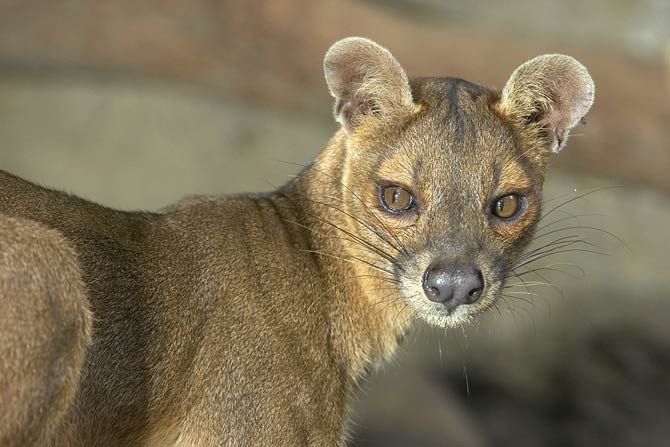
Reproduction
September and October are the only months of the year when the Fossas break their solitary lifestyle. They are known for their aggressive behavior during the mating season. Mating is usually done in trees and can last up to several hours.
Pregnancy in females lasts about three months, the litter usually consists of two young individuals. At first, small fossas are very underdeveloped and require special care from the mother, their eyes open after two weeks. For the first 12 weeks, they are looked after by the female, only after this period they slowly start to eat solid food. During the first three months of life, they eat their mother’s milk. After they turn one year old, they become independent from their mother.
They reach their proper size within two years, and mature sexually in the next two years. They live up to 17 years in the wild, although most individuals do not live to such a ripe old age.
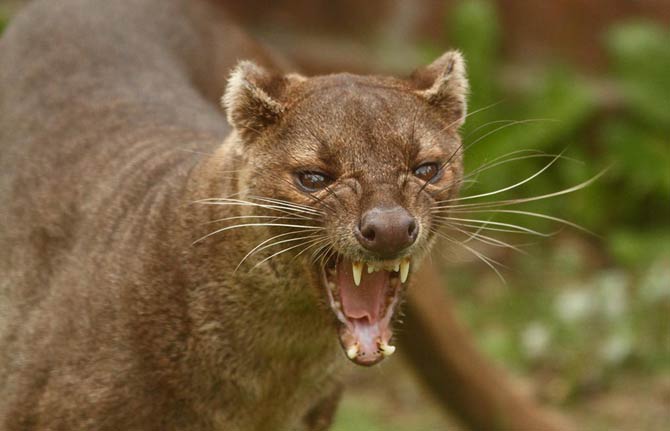
Interaction with humans
The Madagascar fossa is an endangered species. It treats humans as its greatest threat due to deforestation and the deprivation of habitats. Due to these actions, the population of this species has declined sharply.
The island’s farmers also pursue fossas that hunt their animals. Some even wrongly claim that fossas are also dangerous to humans, in fact, fossas are only fighting for survival.

Detailed data / dimensions (size)
Madagascar fossa (Cryptoprocta ferox)
- Body length without tail: 70 to 80 cm (27.6 – 31.5 in)
- Tail length: 65 to 70 cm (25.6 – 27.6 in))
- Weight:
- Males: 6.2 – 8.6 kg (13.7 – 19 lb)
- Females: 5.6 – 6.8 kg (12.3 – 15 lb))
- Smaller individuals are found in the north, larger ones in the south of the island
- There are incredible reports of individuals weighing 20 kg (44 lb)
- Lifespan: up to 20 years in captivity, up to 17 years in the wild

Madagascar fossa – interesting facts
- The large fossa (Cryptoprocta spelea) is also classified in the genus Cryptoprocta. However, this species went extinct before 1400. The name itself can be a bit misleading, as in fact the large fossa was 10 to 30% larger than the Madagascar fossa.
- The classification of this species was extremely difficult because the fossa has features common to three families of carnivores: mongoose, canine and felids. Ultimately, they belong to the Eupleridae family.
- Representatives of this species can hunt the prey for up to an hour. Although they lead a solitary lifestyle, there have been cases in which they hunted together and then shared food.
- In order to mark the terrain, fossas use secretions from the scent glands that are located at the base of the tail. They can also use it when they sense danger and are scared.
- These animals make several types of sounds, mainly during the mating season. Females thus attract males.
- During sexual maturation, females go through a rather strange stage, namely that for a certain period of time they have typically male features. Their sexual organs resemble male organs, this subsides after reaching sexual maturity. Scientists suspect it is a defense against sexual harassment by male individuals.
- Fossas are the villains in the animated film “Madagascar” (2005).



